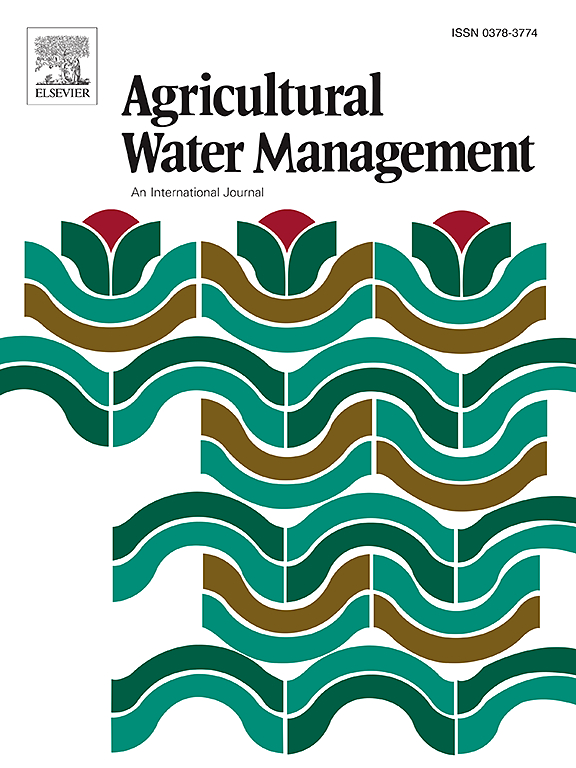Assessing onion salt tolerance using soil apparent electrical conductivity directed soil sampling, planet scope derived yield maps, and boundary analysis
IF 5.9
1区 农林科学
Q1 AGRONOMY
引用次数: 0
Abstract
Plant-salt tolerance parameters support decision making directed at conserving water in salt-affected farmland. Traditional methods for determining crop salt tolerance are labor-intensive and often do not accurately represent on-farm growing conditions. This research on dehydrated processing onion evaluates a novel approach utilizing boundary line analysis (BLA) for plant salt tolerance determination. We used soil and plant near-ground and remote sensing to generate extensive datasets (over 3900 yield-salinity data pairs) with limited ground-truth data (20 or fewer samples per field over four onion fields). First, root-zone soil salinity was mapped (R2=0.82) using apparent electrical conductivity through ensemble modeling with field-specific and multi-field regressions. Second, onion yield was mapped (R2=0.82) using a novel time-series analysis of daily PlanetScope surface reflectance. Third, a novel resampling procedure was applied to fit a BLA-based Maas and Hoffman salt tolerance curve to the upper boundary of the salinity × yield data point cloud. The examined onion variety was classified as moderately salt-tolerant, with a soil salinity threshold of 3.05 dS m−1 and a relative yield decrement slope of 2.27 % at higher salinity levels. This proof-of-concept research demonstrated the feasibility of BLA-based crop salt tolerance determination using geospatial soil and plant sensing with limited ground sampling. Crop breeding programs may use the proposed methodology to determine salt tolerance in new crops in realistic environmental and management conditions and potentially reduce the labor required for traditional salt tolerance curve determination.
利用土壤视电导率定向土壤取样、行星范围衍生产量图和边界分析评估洋葱耐盐性
植物耐盐参数支持盐渍化农田节水决策。测定作物耐盐性的传统方法是劳动密集型的,而且往往不能准确地反映农场的生长条件。以脱水加工洋葱为研究对象,探讨了一种利用边界线分析(BLA)测定植物耐盐性的新方法。我们使用土壤和植物近地和遥感来生成广泛的数据集(超过3900个产量-盐度数据对)和有限的地面真值数据(四个洋葱田每块田20个或更少的样本)。首先,利用视电导率通过场特异回归和多场回归的集合模型绘制根区土壤盐度图(R2=0.82)。其次,利用PlanetScope每日表面反射率的新颖时间序列分析绘制洋葱产量图(R2=0.82)。第三,采用了一种新的重采样方法,将基于bla的Maas和Hoffman耐盐曲线拟合到盐度× 产量数据点云的上界。所测洋葱品种为中等耐盐品种,土壤盐度阈值为3.05 dS m−1,高盐度条件下的相对产量递减斜率为2.27 %。这一概念验证研究证明了基于bla的作物耐盐性测定方法的可行性,该方法使用地理空间土壤和植物遥感技术进行有限的地面采样。作物育种计划可以使用提出的方法来确定新作物在现实环境和管理条件下的耐盐性,并有可能减少传统耐盐曲线测定所需的劳动力。
本文章由计算机程序翻译,如有差异,请以英文原文为准。
求助全文
约1分钟内获得全文
求助全文
来源期刊

Agricultural Water Management
农林科学-农艺学
CiteScore
12.10
自引率
14.90%
发文量
648
审稿时长
4.9 months
期刊介绍:
Agricultural Water Management publishes papers of international significance relating to the science, economics, and policy of agricultural water management. In all cases, manuscripts must address implications and provide insight regarding agricultural water management.
 求助内容:
求助内容: 应助结果提醒方式:
应助结果提醒方式:


